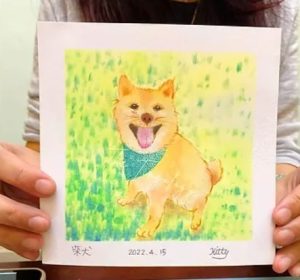Tips for Finding the Perfect Painting Course
So, you’ve decided to dip your toes into the vibrant world of painting. Whether you’re a total newbie or someone looking to refine their brushstrokes, finding the right pastel painting can feel like searching for a needle in a haystack. But fear not! I’m here to guide you through this colorful journey with some handy tips.

First things first, figure out what kind of painting floats your boat. Are you mesmerized by the delicate details of watercolor? Or perhaps the bold strokes of oil paint get your creative juices flowing? Knowing your preferred medium will narrow down your options and save you from drowning in choices.
Next up, consider your skill level. If you’re just starting out, jumping into an advanced class might leave you feeling like a fish out of water. Look for beginner-friendly courses that cover the basics before diving into more complex techniques. On the flip side, if you’ve got some experience under your belt, seek out classes that challenge and push your boundaries.
Location is another biggie. Do you prefer in-person classes where you can mingle with fellow artists and get hands-on guidance? Or does the flexibility of online courses suit your lifestyle better? Both have their perks – it’s all about what works best for you.
Let’s talk instructors. A great teacher can make all the difference between a frustrating experience and an inspiring one. Do some sleuthing on potential instructors – check out their portfolios, read reviews from past students, maybe even stalk them on social media (in a non-creepy way). You want someone whose style resonates with yours and who communicates clearly.
Budget is always a factor too. While it’s tempting to go for the cheapest option available, remember that quality often comes at a price. That said, there are plenty of affordable courses that offer excellent value – sometimes even free ones! Keep an eye out for discounts or bundle deals as well.
Don’t underestimate word-of-mouth recommendations either. Ask friends or family members who share your passion if they know any good courses or teachers. Personal endorsements can be worth their weight in gold!
Another tip: take advantage of trial classes if they’re offered. It’s like test-driving a car before buying it – you’ll get a feel for the teaching style and course structure without committing fully upfront.
If possible, visit local art schools or community centers too; they often have bulletin boards filled with flyers about upcoming workshops and classes that might not be advertised online.
Online forums and social media groups dedicated to art enthusiasts are also treasure troves of information where people share experiences about different courses they’ve taken – both good and bad!
And hey – don’t forget about good old YouTube! While not exactly formal courses per se, there are countless tutorials available covering every imaginable technique under the sun which can supplement whatever formal training you’re getting (or considering).
Finally – trust yourself! Sometimes we get so bogged down trying to find “the perfect” option that we end up doing nothing at all because we’re paralyzed by choice overload syndrome (yes it’s real!). Remember why you wanted to start painting in first place – let curiosity lead way rather than perfectionism holding back creativity.
In nutshell: know preferences & level; research instructors; balance budget & quality; seek recommendations; try before buy if possible; explore local resources & online communities…and most importantly…just start somewhere! Happy painting!
